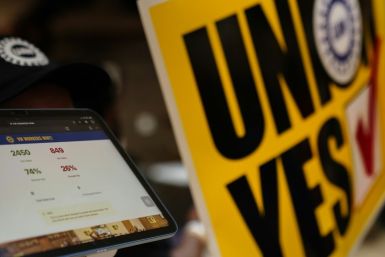Global Markets Overview - Oct. 29, 2015
Why trading around events is such a risk
The market, economists, commentators and the man on the street has combed over all aspects of the Fed statement, and it seems all have concluded that the FOMC will follow through with its commitment to raise rates at the December meeting.
It’s really the only conclusion you can draw from an almost nonchalant statement. From a market’s perspective, the meeting does highlight that event risk is becoming a very large trading risk.
In the past week, event risk has triggered big moves. The ECB Christmas bonus program (more QE) added upside risk and saw European indices, which had been dragging over the past quarter, rocket back towards mid-year levels.
The PBoC, although not on the same level as the ECB, stirred the commodities complex last Friday. And in the past 24 hours, you can drill down into New Zealand and Australian inflation reads and what these have done to expectations of rate movements by each country’s respective central bank. While the RBNZ snuffed this idea out this morning, the market still believes it may have to move in 2015.
However, the biggest market risk has been the removal of the premium in the USD on the theory that the risks to the global and domestic economy is/was enough to stay until next year. This trade has been developing for the past six to eight weeks.
This created a very large event risk issue which is why it has caught my attention, as the market has been forced to reset its view on central bank differentials. Two pairs that have been particularly affected by this baseline reset are:
· EUR/USD: pre-ECB announcement, it was at $1.135, while after the ECB $1.117. Before the Fed meeting, it was at $1.108 and after at $1.089. At the lowest, it settled at $1.092 – the lowest level in the pair since August. The differential between the ECB and the Fed clearly is returning to the baseline.
· AUD/USD: Expectations that the RBA would cut rates in 2015 (from the market’s perspective) was being priced at a 56% chance before the CPI print. After the print, expectations had risen to 87%. The AUD has stubbornly remained above 72 cents for most of October.
In 24 hours the AUD has been reset, inflation is teetering on the edge of the RBA’s comfort band and now the USD side is demanding a premium again. The differential between the RBA and the Fed is also returning to the baseline theory.
Event risk has clearly caught most of the market out and the pain of trading around event risk is currently pretty clear. In times like these, sticking to your trading strategy and staying clear of event risk could be the most advantageous strategy.
Ahead of the Australian Open
The ASX is pointing higher this morning up 0.7% to 5372. ANZ has reported what appears to be on first blush, near enough to inline numbers unlike its cross-town rival NAB, which did disappoint yesterday. It should be a pass mark for the bank, and should see it at least holding the line on its share price.
Asian markets opening call
Price at 8:00am AEDT
Change from the Offical market close
Percentage Change
Australia 200 cash (ASX 200)
5,372.70
37
0.70%
Japan 225 (Nikkei)
19,126.20
223
1.18%
Hong Kong HS 50 cash (Hang Seng)
22,999.20
43
0.19%
China H-shares cash
10,605.50
47
0.45%
Singapore Blue Chip cash (MSCI Singapore)
344.40
4
1.13%
US and Europe Market Calls
Price at 8:00am AEDT
Change Since Australian Market Close
Percentage Change
WALL STREET (cash) (Dow)
17,768.90
167
0.94%
US 500 (cash) (S&P)
2,089.43
20
1.01%
UK FTSE (cash)
6,453.50
88
1.34%
German DAX (cash)
10,914.20
191
1.78%
Futures Markets
Price at 8:00am AEDT
Change Since Australian Market Close
Percentage Change
Dow Jones Futures (December)
17,688.00
167.50
0.96%
S&P Futures (December)
2,082.88
20.00
0.97%
ASX SPI Futures (December)
5,349.50
41.00
0.79%
NKY 225 Futures (December)
19,192.50
242.50
1.28%
Key inputs for the upcoming Australian trading session (Change are from 16:00 AEDT )
Price at 8:00am AEDT
Change Since Australian Market Close
Percentage Change
AUD/USD
$0.7106
-0.0013
-0.18%
USD/JPY
¥121.030
0.590
0.49%
Rio Tinto Plc (London)
£24.34
0.01
0.04%
BHP Billiton Plc (London)
£10.98
0.06
0.60%
BHP Billiton Ltd. ADR (US) (AUD)
$24.02
0.24
0.99%
Gold (spot)
$1,156.35
-11.50
-0.98%
Brent Crude (December)
$49.17
2.34
4.99%
Aluminium (London)
1483
1.00
0.07%
Copper (London)
5190
-17.50
-0.34%
Nickel (London)
10500
-75.00
-0.71%
Zinc (London)
1737
-4.50
-0.26%
Iron Ore (62%Fe Qingdao)
$49.95
-1.55
-3.01%
IG Iron Ore (CNH)
¥344.65
-2.50
-0.72%
IG provides round-the-clock CFD trading on currencies, indices and commodities. The levels quoted in this email are the latest tradeable price for each market. The net change for each market is referenced from the corresponding tradeable level at yesterday’s close of the ASX. These levels are specifically tailored for the Australian trader and take into account the 24hr nature of global markets.
Please contact IG if you require market commentary or the latest dealing price.
EVAN LUCAS Market Strategist
IG, Level 15, 55 Collins Street, Melbourne VIC 3000 D: +61398601748 | T: +61398601711www.ig.com
[Kick off your trading day with our newsletter]
More from IBT Markets:
Follow us on Facebook
Follow us on Twitter
Subscribe to get this delivered to your inbox daily






